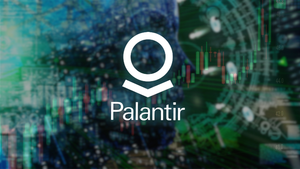
October 1, 2025 – In a significant shift within the burgeoning prediction market landscape, Kalshi, the U.S. Commodity Futures Trading Commission (CFTC)-regulated exchange, has reportedly eclipsed its decentralized counterpart, Polymarket, in monthly trading volume. This landmark development, occurring in September 2025, comes as John Wang, Kalshi's newly appointed head of crypto, emphatically declared blockchain technology to be "essential" for unlocking the next phase of growth and innovation in prediction markets.
The overtake signals a pivotal moment for the crypto ecosystem, underscoring the increasing influence of regulatory clarity in attracting mainstream adoption and substantial capital. While Polymarket has historically championed a decentralized, blockchain-native model, Kalshi's regulated status in the U.S. appears to have provided a crucial advantage, fostering investor confidence and paving the way for a convergence of traditional financial instruments with cutting-edge blockchain capabilities. This shift highlights a maturing industry where compliance and innovative technology are increasingly intertwined, challenging the long-held narrative that decentralization alone is the sole path to success.
Market Impact and Volume Dynamics
The numbers speak volumes: Kalshi recorded an impressive $1.3 billion in monthly trading volume in September 2025, significantly outperforming Polymarket's $773 million for the same period. This surge cemented Kalshi's dominance, with data for the week of September 11-17, 2025, indicating Kalshi accounted for a commanding 62% of the total prediction market volume, compared to Polymarket's 37%. This dramatic shift marks a clear ascendancy for the regulated platform.
The primary driver behind Kalshi's accelerated growth appears to be its CFTC-regulated status, which allows U.S. citizens to legally participate in event-based trading. This regulatory clarity has not only de-risked participation for individual traders but has also opened doors for institutional interest, a segment largely inaccessible to unregulated or offshore platforms. Furthermore, a substantial portion of Kalshi's recent volume explosion is attributed to the booming sports betting market in the U.S., with football-related markets reportedly contributing over 70% of its trading activity. This demonstrates how prediction markets are effectively tapping into lucrative, established sectors, accelerating their integration into the broader financial and betting landscapes.
While there haven't been specific price movements of tokens directly tied to Kalshi, as it operates as a centralized exchange, the broader implication is a validation of the prediction market sector as a whole. The increased trading volume across these platforms suggests a growing appetite for event-based derivatives and a recognition of their utility as hedging tools and alternative investments. The shift in leadership from a decentralized, crypto-native platform to a regulated entity also prompts a re-evaluation of investment strategies within the prediction market space, potentially favoring platforms that can offer both innovation and regulatory compliance.
Community and Ecosystem Response
The crypto community's reaction to Kalshi's ascendancy has been a mix of strategic acknowledgment and ongoing debate. While some crypto purists continue to champion fully decentralized models, the practical success of a regulated entity like Kalshi has prompted many to reconsider the critical role of compliance in achieving scale and mainstream adoption. On social media, discussions often revolve around the trade-offs between decentralization and regulatory approval, with a growing sentiment that a hybrid approach might be the most viable path forward for prediction markets.
Crypto influencers and thought leaders have largely viewed Kalshi's growth as a sign of the prediction market sector's maturation. Many point to the fact that Kalshi, despite being regulated, is actively integrating blockchain technology, allowing stablecoin deposits (such as Circle's USDC) and supporting networks like Solana and Base. This strategic embrace of crypto infrastructure, even while operating within a regulated framework, is seen as a pragmatic approach to leveraging the benefits of blockchain without incurring the regulatory friction often associated with purely decentralized platforms. The launch of KalshiEco, an initiative focused on blockchain-based prediction market infrastructure, further solidifies this commitment.
The broader Web3 ecosystem is observing these developments closely. While no immediate, direct impacts on specific DeFi protocols or NFT projects have been reported, the success of prediction markets like Kalshi could indirectly benefit the broader crypto space by demonstrating practical, real-world applications of blockchain technology that appeal to a wider, more traditional user base. The increased visibility of prediction markets, even being featured in popular culture like a recent South Park episode, signals a growing mainstream awareness that could eventually spill over into other Web3 applications. The ongoing competition also highlights the need for decentralized prediction markets to innovate not just on technology, but also on user experience and, where possible, regulatory engagement to remain competitive.
What's Next for Crypto
The rise of Kalshi and its overtake of Polymarket carries significant short and long-term implications for the crypto market, particularly for the prediction market sector. In the short term, we can expect intensified competition, with both platforms likely to redouble efforts to attract and retain users. Polymarket, which has historically faced U.S. regulatory hurdles, is reportedly pursuing a strategy to re-enter the U.S. market by acquiring a CFTC-licensed derivatives exchange, QCX. This move suggests a recognition that regulatory compliance is no longer optional for significant growth and indicates a potential shift towards a "hybrid" model that combines decentralized technology with regulated operations.
Long-term, this trend points towards a future where prediction markets serve as a crucial bridge between traditional finance and the crypto world. Kalshi's success validates the thesis that event-based trading can be a legitimate and high-volume financial instrument, potentially accelerating the adoption of similar regulated crypto-adjacent products. The strategic integration of blockchain by regulated entities like Kalshi, as highlighted by John Wang, suggests that the technology will increasingly be seen as an underlying infrastructure layer rather than solely a means for fully decentralized, unregulated operations.
Potential catalysts to watch include further regulatory developments in the U.S. and globally, which could either open new avenues or impose stricter constraints on prediction markets. The continued expansion into lucrative sectors like sports betting will also be a key growth driver. For projects and investors, strategic considerations should include evaluating platforms based on a balance of innovation, liquidity, regulatory status, and user experience. Possible scenarios range from a continued dominance of regulated hybrid models to a future where decentralized platforms find innovative ways to achieve scale and compliance simultaneously, perhaps through clearer legal frameworks for DAOs or novel regulatory sandboxes. The convergence of crypto, AI, and real-time data will also continue to shape how prediction markets evolve, offering new ways to aggregate information and hedge against future events.
Bottom Line
The ascendancy of Kalshi over Polymarket in trading volume, coupled with its crypto lead's strong advocacy for blockchain, marks a defining moment for the prediction market industry and the broader crypto ecosystem. The key takeaway for crypto investors and enthusiasts is the undeniable power of regulatory clarity in unlocking significant market potential and attracting mainstream adoption. While decentralization remains a core tenet for many, Kalshi's success demonstrates that a regulated framework, when combined with strategic blockchain integration, can lead to unprecedented growth and investor confidence.
The long-term significance lies in the validation of prediction markets as a legitimate financial instrument, capable of aggregating real-time data and offering valuable hedging and investment opportunities. This development strengthens the narrative that crypto technologies are not just for niche, unregulated applications but are essential components of future financial infrastructure, even within regulated environments. The ongoing competition between Kalshi's centralized, regulated model and Polymarket's evolving hybrid approach will be a crucial narrative to follow, offering insights into the optimal balance between innovation and compliance.
Important metrics to monitor include the continued growth in trading volumes across both regulated and decentralized prediction markets, the success of Polymarket's re-entry into the U.S. market, and further statements or initiatives from Kalshi regarding its blockchain integration roadmap. The evolution of regulatory frameworks globally will also dictate the pace and direction of this sector's expansion. This event serves as a powerful reminder that the crypto landscape is dynamic, with innovation constantly pushing the boundaries of what's possible, often in unexpected and strategically compliant ways.
This article is for informational purposes only and does not constitute financial or investment advice. Cryptocurrency investments carry significant risk.





